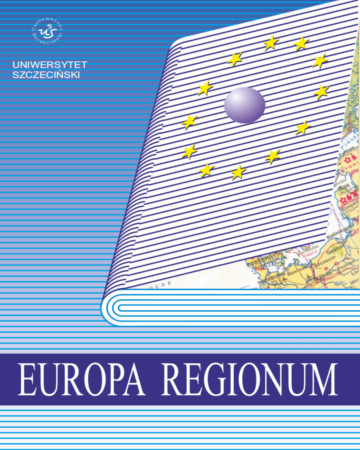
ISSN: 1428-278X
OAI
DOI: 10.18276/er.2017.31-03


Issue archive /
t. 31 2017
Rozwój potencjału absorpcyjnego przedsiębiorstw finansowych w Polsce a poziom ich innowacyjności
(The development of the absorptive capacity of financial enterprises operating in Poland versus their innovativeness)
| Authors: |
Waldemar
Glabiszewski
dr hab., Uniwersytet Mikołaja Kopernika w Toruniu Wydział Nauk Ekonomicznych i Zarządzania Katedra Zarządzania Przedsiębiorstwem |
| Keywords: | absorptive capacity innovativeness technology transfer |
| Data publikacji całości: | 2017 |
| Page range: | 16 (37-52) |
| Klasyfikacja JEL: | M10 |
Abstract
Against popular assumption, transfer of the technologies that are avaliable in
the environment might be a source of innovative solutions. However, this highly depends
on an enterprise’s absorptive capacity as well as desabsorptive abilities of technology doner.
The author of the paper, based on his own research findings, attempts to assess the influence
of the absorptive potential level existing in the financial companies operating in Poland on
their innovativeness. In particular, he tries to eliminate the doubt suggesting that the increase
of absorptive capacity, meaning, among others, the increase of experience, leads rather to
some organizational routines restricting creativity instead leading to implementation of innovations,
as it suggested in the literature. This in turn leads to limited originality of changes
being outcomes of technology transfer.
Download file
Article file
Bibliography
| 1. | Bennasi, M., Greve, A., Harkola, J. (1999). Looking for a Network Organization. The case of GESTO. Journal of Market Focused Management, 3 (45), 205–229. |
| 2. | Cohen, W.M., Levinthal, D.A. (1990). Absorptive capacity. A new perspective on learning and innovation. Administrative Science Quarterly, 1 (35), 128–152. |
| 3. | Dolny, E., Osińska, M. (2009). Statystyka opisowa. Bydgoszcz: Wydawnictwo Uczelniane Wyższej Szkoły Gospodarki. |
| 4. | Drucker, P.F. (1992). Innowacja i przedsiębiorczość. Praktyka i zasady. Warszawa: PWE. |
| 5. | Evans, Ch. (2005). Zarządzanie wiedzą. Warszawa: PWE. |
| 6. | Glabiszewski, W. (2016). Potencjał absorpcyjny przedsiębiorstw finansowych w Polsce w procesie transferu innowacyjnych technologii. Toruń: Wydawnictwo Uniwersytetu Mikołaja Kopernika. |
| 7. | Glabiszewski, W., Zastempowski, M. (2016). The ability to assimilate technology as a source of competitive advantage of financial companies in Poland. Journal of Competitiveness, 4 (8), 61–71. |
| 8. | Miles, J.A. (2012). Management and organization theory. San Francisco: Jossey-Bass Reader. |
| 9. | Stawasz, E. (1999). Innowacje a mała firma. Łódź: Wydawnictwo Uniwersytetu Łódzkiego. |
| 10. | Tidd, J., Bessant, J. (2011). Zarządzanie innowacjami. Integracja zmian technologicznych, rynkowych i organizacyjnych. Warszawa: Wolters Kluwer. |
| 11. | Todorova, G., Durisin, B. (2007). Absorptive capacity. Valuing a reconceptualization. Academy of Management Review, 3 (32), 774–786. |
| 12. | Tourangeau, R., Conrad, F.G., Couper, M.P. (2013). The science of web surveys. Oxford: Oxford University Press. |
| 13. | Trott, P. (2008). Innovation management and new product development. Harlow: Prentice Hall. |
| 14. | Wasilewska, E. (2008). Statystyka opisowa nie tylko dla socjologów. Teoria, przykłady, zadania. Warszawa: Wydawnictwo SGGW. |
| 15. | Wilson, J. (1999). Different industries and different customer values require different resources. Towards the marriage of strategic positioning theory and the resource-based view of the firm. W: M.A. Hitt, P.G. Clifford, R.D. Nixon, K.P. Coyne (red.), Dynamic strategic resources. Development, diffusion and integration (s. 129–164). Chichester: John Wiley & Sons. |
| 16. | Zahra, S.A., George, G. (2002). Absorptive capacity. A review, reconceptualization, end extension. Academy of Management Review, 2 (27), 185–203. |